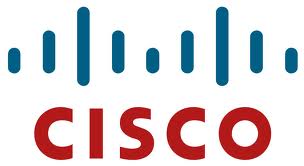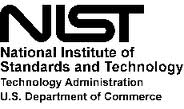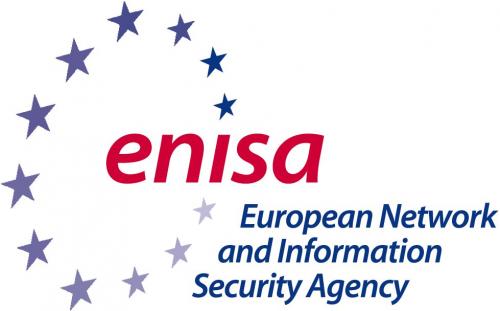Symposium Proceeedings
|
|
MONDAY, 10 OCTOBER | Symposium Opening Day
|
| 12.30 |
Registration |
| 13.30 |
WELCOME AND OPENING REMARKS: "EVERY SILVER LINING HAS A CLOUD"
During the first annual "International Cloud Symposium (ICS)," attendees will discover how very different this Cloud event really is. ICS brings together
a wide range of people from the global standards' community, including practitioners, government agencies, vendors, as well as policy makers. With much of the responses to the need for policy and standards in the Cloud being driven primarily on a national level, members of the ICS programme committee felt strongly about broaden the dialogue to a more global level. Expert speakers from the U.S., Canada, South Africa, India, China, Japan, and many countries throughout Europe have been invited to share their views -- offering attendees a truly global perspective.
Assisted by a key speakers featured during the next few days, Peter Brown, will tell the story of how and why the decision was made to bring such a diverse group of people together, and highlight the core message that every major success story in technology deployment today does involves Cloud Computing...
|
| 14.00 |
OPENING SESSION: UNDERSTANDING & OVERCOMING BARRIERS FOR FASTER CLOUD ADOPTION
Respected international experts agree that the main advantages of Cloud Computing are reduced cost of ownership, no capital investment, scalability, self-service, location independence and rapid deployment. So what continues to prevent faster Cloud adoption? One of the main issues is lack of "TRUST." Trust is not easily defined, but most people agree that when it comes to Cloud Computing, transparency is essential to creating trust. Governments and businesses must be able to see that Cloud service providers are complying with agreed security, privacy, and data management standards and practices, while suppliers of Cloud technologies and services remain well equipped to provide the necessary controls. This session will examine the top barriers and risks identified in recent reports by two leading international organisations that are preventing the wide spread Cloud Computing adoption, as well as their proposals and recommendations on mitigating those risks. |
| 15.00 | Refreshment Break |
| 15.15 |
GOVERNANCE: RETAINING CONTROL IN A CLOUD ENVIRONMENT
In using Cloud infrastructures, the client necessarily cedes control to the Cloud Provider (CP) on a number of issues. This loss of governance and control could have a potentially severe impact on the organisation’s strategy and therefore on the capacity to meet its mission and goals. The session addresses these concerns and looks at ways that the client can remain in control of its assets. Topics to be covered:
|
| 16.45 |
OPEN STANDARDS IN THE CLOUD INTEROPERABILITY DEMONSTRATION
In OASIS, the ebXML Messaging Services (ebMS) Technical Committee (TC) has the responsibility for the research, design and specification of Web Services-based messaging protocols for B2B data exchange. In 2002, the TC developed the version 2.0 of ebMS. Since then it has continued to respond to emerging requirements and newer technologies and standards which in 2007 resulted in the OASIS standard approved version 3.0 Core Specification.
AS4 has the potential to become the standard for inter-cloud integration. From an integration perspective there are two key layers that make up an integration stack, these are the messaging layer and the payload layer. Even integration teams within companies like Cisco are looking at messaging standards like AS4 to facilitate inter-cloud interaction.
A key challenge in cloud computing is the interoperability among various cloud providers. This will continue to be a challenge until interoperability requirements are standardized to support business exchanges. AS4 helps to address this challenge for the messaging layer. The combination of standardized transports and message content will help facilitate critical adoption levels, continuing to drive down costs, and improve time to capability for business exchanges over the internet.
Reference links: ebMS TC public home page |
| 17.30 | Symposium Adjourns for the Day, shuttle service will be available |
|
|
TUESDAY, 11 OCTOBER | Day Two
|
| 08.30 | Morning Coffee & Announcements |
| 09.00 |
PROTECTING INFORMATION THROUGH CYBERSECURITY RISK MANAGEMENT POLICIES & PRACTICES
The secure storage of government data is one of the most significant
responsibilities of government officers. There are a range of laws which
mandate how the information must be protected and who may access them.
These laws often extend to mandating the physical geography in which
data must be stored, e.g. in the United Kingdom. The interpretation of
these laws is the basis for the set of policies which guide the
decisions of the senior officials who set the standards to be applied to
the data they are responsible for. In the UK, these are designated
Impact Levels on a scale from 0 to n, where 0 is of low risk to the
government, e.g. generally published information and n is where data is
of national security importance and highly confidential. The measures
taken to secure these data vary by risk and in the extreme are protected
by force.
However, moving government data into shared facilities and even public Cloud introduces new levels of risk in the equation. What are the practical concerns which would dictate the decision to store data, e.g. the "Swine Flu" database in the public Cloud? On what basis can personal medical records be stored in shared facilities and possibly exported from the country? How can sets of personal data be shared between professionals across departments without compromising the laws applying to privacy? And how would sharing services across multiple departments affect the "hosting" department decisions on information risk management? The UK G-Cloud programme prepared inputs on several of these topics in its work reported in 2010, URL. However, there are no firm conclusions or changes in policy as of yet which would guide the Senior Information Risk Officer (SIRO) in her/his decision making in this area. Some further work and clarity is required to identify the key principles and assumptions which apply. For example, what are the key security concerns for government in transmitting and storing data beyond the firewall? What principles apply to the location of storage and exportation within the current jurisdiction, e.g. UK versus European Economic Area (EEA) versus global operations of service providers? This interactive session seeks to bring the community up-to-date on thinking in this area and provide practical examples in the public domain, for example the Police UK database of crime statistics. |
| 10.30 | Refreshment Break |
| 10.45 |
IDENTITY & ACCESS CONTROL CHALLENGES IN THE CLOUD
The move to Cloud Computing brings with it a number of special challenges when it comes to security. One particular area is that of identity and access management - managing who can access information is fundamental to information security. Cloud computing has introduced two key changes:
firstly although responsibility for access management still lies within the organization, the IAM technology is physically distributed; secondly individuals now have significant presence in IT systems outside of the organization. In this session, the panellists will address some of these concerns including:
|
| 12.15 | Luncheon |
| 13.15 |
DATA PRIVACY & THE ROLE POLICY PLAYS IN DEFINING TRUST REQUIREMENTS
Cloud Computing represents a paradigm shift on the scale of the mainframe, distributed Computing, the internet and the web. This transformational quality is explored in a 2010 study by the World Economic Forum, which found that global adoption of Cloud technologies enables radical business innovation, new business models and significant improvements in the efficiency and effectiveness of IT. But the study also identified disruptive aspects of Cloud Computing, concerns and barriers. Data privacy and security were the top barriers cited by stakeholders in the WEF study. Issues such as data location, legal and policy compliance, government access to personal information, user control and access to their personal information, data deletion and other factors all contribute to concerns about privacy trust in Cloud Computing services. This session will focus on privacy and trust issues associated with Cloud Computing environment, particularly those Cloud-based services where global, public sector data protection and privacy laws, regulations and policies impact the Cloud service providers and users. Specific areas of interest are privacy and related trust issues among citizens, customers, and the business sectors utilizing Cloud-based services. Session scope and topics to be covered:
|
| 14.45 | Refreshment break |
| 15.15 |
LEGAL IMPEDIMENTS TO SUCCESSFUL CLOUD IMPLEMENTATIONS
Customers and potential customers of Cloud provider services should have regard to their respective national and supra-national obligations for compliance with regulatory frameworks and ensure that any such obligations are appropriately complied with. This session identifies the most common legal aspects that need attention in the development and operation of Cloud based services. Topics to be covered:
|
| 16.45 | Symposium Reception, shuttle service will be available |
|
|
WEDNESDAY, 12 OCTOBER | Day Three
|
| 08.30 | Morning Coffee |
| 09.00 |
INTERNATIONAL ROADMAPPING PROJECTS: PROGRESS & TRENDS
Europe and the United States have taken a leading role in defining Cloud standards roadmapping that is aligned in terms of requirements, recommendations and future steps as part of an effort to foster complementary global solutions. This session will examine some of the interoperability issues that are addressed by both the SIENA European Roadmap on Grid and Cloud Standards for e-Science and Beyond, and the NIST Cloud Computing Standards Roadmap. The session will explore how expertise and knowledge in the European eScience community can be harnessed to address current barriers such as trust and security as well as bring benefits to public services and enterprise. It will also address horizontal issues such as virtualization and data handling issues. Interactive discussions will ensure multi-stakeholder perspectives and help define a clear action agenda moving forward. Session scope & topics to be covered:
|
| 10.30 |
Refreshment break |
| 11.00 |
Moving forward from the focus on Roadmapping, this Session looks towards the needs of policy-makers and CIOs in addressing the core issues of the Symposium, namely, standards and best practices for interoperability and trust in the Cloud. Representatives of selected standards bodies will respond to the challenges outlined in the road maps and provide further insight into their activities, as well as plans for standards in support of Cloud based services. Topics to be covered:
|
| 12.30 | Luncheon |
| 13.30 |
KEYNOTE SESSION: INTERNATIONAL CLOUD COMPUTING STRATEGIES Megan Richards, Director of Converged Networks and Services, INFSO, European Commission Dawn Leaf, Senior Advisor, National Institute of Standards and Technology (NIST) |
| 14.00 | PUBLIC SECTOR CLOUDS: CONSTRAINTS & REQUIREMENTS
Many governments are planning Cloud deployments in the next few years. As Cloud technology and standards mature, there are serious concerns about Cloud robustness and proprietary lock-ins that could delay the progress of public sector Cloud computing. International public sector Cloud leaders will come together in this session and discuss their plans for deploying Cloud resources (e.g. data, computing, application) including requirements such as data portability and interoperability. Each panelist will provide a short overview of their current Cloud activities, concerns, and requirements. This will be followed by an interactive discussion among the panelists and the audience about possible next steps. There will also be opportunities for continuing conversations after the Session. |
| 15.30 | Refreshment break |
| 15.45 |
GOVERNMENT INTER-CLOUD: DATA PORTABILITY & INTEROPERABILITY
To build national and international public sector Cloud utilities, it will be necessary to interface across multiple Clouds. The interoperability and standards needed to build an Inter-Cloud as an extension of the Internet are now emerging. Public sector Cloud implementers will need to learn more about Inter-Clouds to build trusted deployments. Leading experts in this session will present Inter-Cloud use cases, challenges (e.g interoperability, federation, roaming, cross-provider identity, standardized units of measurement and SLA's, global cloud infrastructure governance, universal service directories, peering and exchange, cloud to cloud trust infrastructures) and possible solutions for public sector Clouds. Panelists will describe the benefits and challenges for interfacing Clouds to form a public sector utility. There will be an overview of the status of standards and testbeds. The audience will be able to explore possible opportunities for leveraging Inter-Cloud activities in future deployments. |
| 17.15 |
CLOSING REMARKS |
| 17.30 | Symposium Ends, shuttle service available |
|
|
THURSDAY, 13 OCTOBER | Related Meetings & Workshops
|
| 08.30 | Morning Coffee |
| 09.00 |
ROUNDTABLE: Privacy Standard Experts By Invitation meeting adjourns at 13.00 |
| 10.00 |
WORKSHOP: Security Parameters in Cloud Service Level Agreements Open To All ICS Attendees workshop adjourns at 12:45 |
| 12.30 | Break for Lunch |
| 13.00 | TECHNICAL COMMITTEE MEETING: Transformational Government Framework (TGF) TC Face-to-Face OASIS Members Only meeting adjourns at 15.00 |
| 15.00 |
STEERING COMMITTEE MEETING: eGov Member Section StC Face-to-Face OASIS Members Only meeting adjourns at 17.00 |
| 15:00 | Refreshment break |
| 16.00 | TECHNICAL COMMITTEE MEETING: Privacy Management Reference Model (PMRM) TC Face-to-Face OASIS Members Only meeting adjourns at 17.00 |
| 17.00 | Workshops & Meetings Ends, shuttle service available |
















